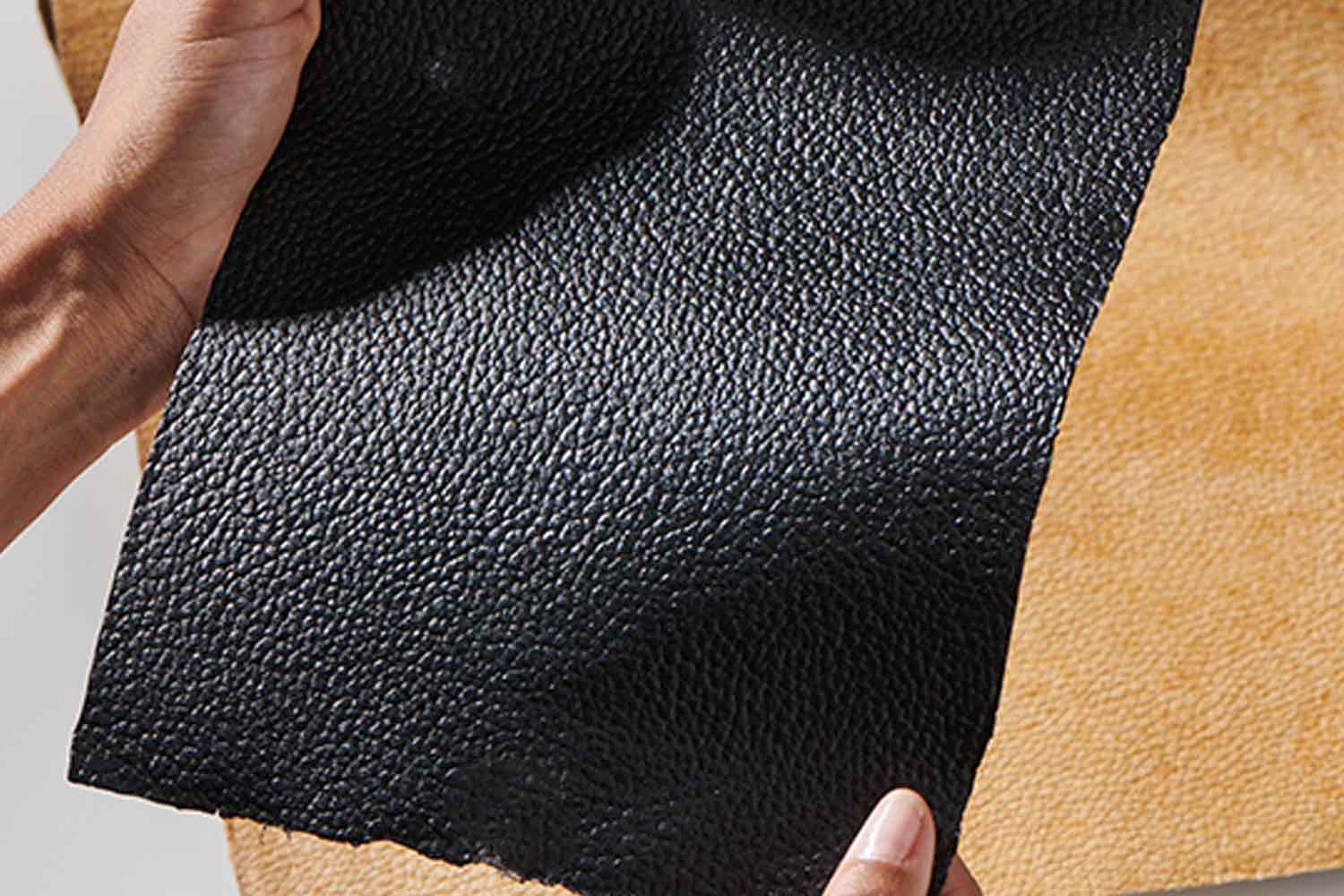From international research to local supply chains, materials obtained from mushrooms like Mylo and Muskin show that mycelium can become a concrete alternative to animal and synthetic leather

For several years now, the research world has been talking about leathers that don’t come from animals, nor from plastic, but from mushrooms. These are materials obtained from mycelium, the underground apparatus that sustains the life of the fungus. This network of filaments, when grown under controlled conditions, takes the form of a compact mass that can be processed until it resembles leather. This is where Mylo and Muskin are born, two different projects in origin and characteristics, but united by the same question: can we rethink leather without livestock and without petroleum derivatives?
The process is relatively simple: mycelium is fed with plant waste and grows in a few days or weeks, depending on the technique. Then it’s transformed into sheets and finished with specific treatments that give it consistency, color, and resistance. The result is a material that doesn’t just imitate the appearance of leather, but also the feel to the touch, with the difference that it doesn’t require traditional tanning processes, known for intensive use of water and chemical substances.
Objective: surpassing animal and synthetic leather
Mylo was born in the United States as an applied research project, with the intention of developing a material that could replace animal leather on a large scale. Its composition is based mostly on mycelium and natural fibers, with the addition of a thin synthetic coating that increases its resistance. It’s grown in vertical environments powered by renewable energy and in much faster times compared to the years required by animal farming. In recent years it has attracted the interest of some major fashion companies, but in 2023 production was suspended: a sign that, despite progress, bringing an innovative material to market remains complex and expensive.
Muskin, on the other hand, was born in Italy and has a different approach. It’s derived from the mycelium of a mushroom that grows spontaneously on chestnut trunks and is processed without the addition of chemical substances or synthetic components. The result is a completely biodegradable material that doesn’t release toxic elements and lends itself to various uses, from coverings to accessories. While Mylo aimed for an international and industrial path, Muskin follows a more artisanal route, but maintains a strong symbolic value: it demonstrates that even in smaller supply chains it’s possible to obtain real alternatives to animal leather.
Opportunities and limits of mushroom-based materials
Both materials fit into the debate on fashion sustainability, a sector that has been at the center of criticism for years due to high resource consumption and massive use of polluting substances. Animal leather involves intensive farming and impactful tanning processes, while synthetic “leathers” are often derived from petroleum and not biodegradable. Mushrooms therefore represent an interesting option, capable of reducing environmental impact and opening new design perspectives.
At the same time, there are limitations. Mylo, while being biobased, is not entirely biodegradable due to the synthetic coating. Muskin, on the contrary, is completely biodegradable, but hasn’t yet reached the diffusion necessary to compete with conventional materials. The challenge will be understanding whether these experiments will manage to transform into stable and accessible solutions, capable of truly changing the way we produce and consume fashion.
For now, however, Mylo and Muskin tell us about a concrete possibility: that the future of materials could come from an organism often hidden from view, but fundamental to nature’s balance.
Source: Bolt
